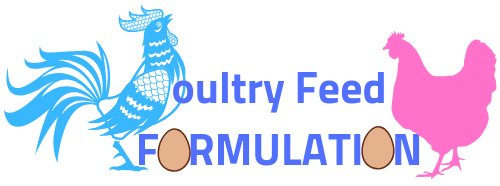Poultry feed accounts for the biggest cost in poultry raising, typically in the region of 65% to 70%. Typically, in commercial production, poultry feed is formulated scientifically and processed with state-of-the-art machines that guarantee the best standards possible.
Many of the large poultry integrators typically process their own poultry feeds using least cost feed formulation techniques. Doing this professionally assures you of high quality standards. Poultry feed formulation is a science but you don’t millions in investments to begin formulating your own poultry feeds.
If you are running a large poultry farm, you can start processing your own poultry feeds in your backyard if you know the right ingredients to use, the ratio in which you should use these ingredients as well as the right quality control measures that will assure you of clean and high quality poultry feeds free of salmonella.
It is not easy growing all the poultry feed ingredients by yourself so you are most likely going to source your poultry feeds from elsewhere. You need to know the ingredients to use and the nutritional composition of the ingredients used so that you can accurately formulate the poultry feeds that have the right nutritional balance.
The most popular ingredients are generally soy and corn but if you are uncomfortable with GMO grains, you can bypass these and sue the non-GMO versions of these grains. The good thing with poultry feed formulation is that there are numerous types of ingredients that you can use or substitute so if any particular grain is too costly or not readily available, you can always substitute it with the one that you can access more easily so as to come up with your custom mix. And you can do this without necessarily compromising on the nutritional quality of the eventual poultry feeds.
Here is a look at the various types of grains that you can use in your poultry feed formulation. We think getting the ingredients right is of paramount importance. Once you that do this, milling the poultry feed is generally the easy part.
Ingredients to Put on Your Poultry Feed
There are numerous feed formulation recipes that you can find online. What is important is that you pick one that is suited for your region. A grain that is abundant in the Philippines may not be readily available in South Africa or Australia. So try to pin it down to the specifics in order to find a more accurate poultry feed formulation recipe.
The grain that you choose should not just be readily available but also affordable. With least cost poultry feeds formulation, affordability is generally an important consideration.
Take time to study the ingredients used in the commercial poultry feed formulation for various kinds of birds in order to get an idea on the proportion in which they should be mixed. In our Poultry Feed Formulation Manual, we have included information on the proportion in which these ingredients should be mixed in order to get an optimal feed for birds of particular ages. That is a very important consideration as you are likely to severely impact the yield or productivity of your birds if you give them the wrong feed formulation.
Chick mash will need a unique kind of formulation that is different from that of the growers’ mash, layers mash or the finisher mash used in the broilers. For broilers, there is even a post-finisher mash.
When doing the poultry feeds mixing, make sure you strike a careful balance between all the macronutrients used in the poultry mash be they the fats, proteins or carbohydrates as well as the micronutrients such as the vitamins and the enzymes. With some trial and error, you will eventually arrive at an appropriate poultry feed formulation that will be perfect for the nutritional needs of your chickens.
Below is a look at some of the basic ingredients used in poultry feeds:-
- Alfalfa Meal: This is high in protein
- Corn or maize: This is the mainstay of the chicken diet.
- Field peas: You can use this or the soybean. It is the main source of proteins in poultry feeds.
- Oats or barley
- Wheat
Things to Add in Your Poultry Feed Formulation
When milling your own poultry feeds, you can add following ingredients in tiny amounts:-
- Grit
- Fishmeal: To help boost the protein content as well as the omega 3 in the poultry feeds.
- Crab meal: Include small amounts for both proteins and minerals
- Cultured yeast: Can provide digestive enzymes as well as minerals and B vitamins.
- Flaxseed: This can be a great source of omega 3
- Probiotic: Follow manufacturer’s directions when including these in your poultry feeds. You can also use homemade probiotics such as fermented yoghurt or fermeted vegetables.
- Oyster shell: This can be a great source of calcium, particularly for laying birds.
- A little salt
This is just a general guideline on poultry feed formulation. If you are looking for a more comprehensive guideline on how to prepare your own poultry feeds, check out our Poultry Feeds Formulation Manual.
Related posts:



Let me know Echo Vape shop in 2341 Russellville Rd, Suite 104 sells vape juice manufactured by HexaMade In Belgium E-liquid? I have emailed them at [email protected]
buy cialis soft tabs Lntobk Plaquenil